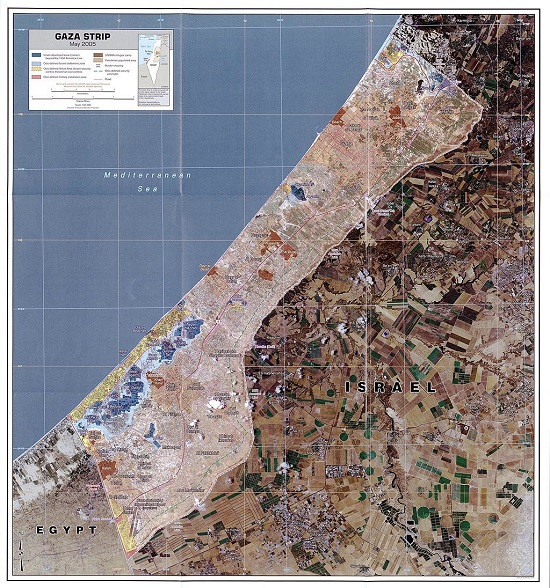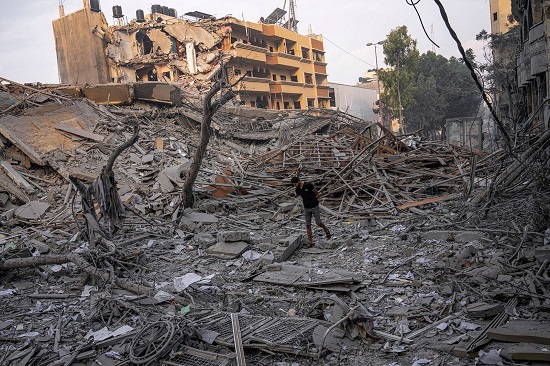Why Israel gave up Gaza Strip in 2005?
The Gaza Disengagement Plan of 2005-- in retrospect.
Israel pullout from Gaza in 2005
In the annals of the Israeli-Palestinian conflict, the year 2005 stands out as a pivotal moment when Israel undertook a unilateral action that reverberates to this day.
The 'Gaza Disengagement Plan,' as it was known, marked the withdrawal of Israeli control from the Gaza Strip and the dismantling of four settlements in the northern West Bank. This move was significant, as it was not part of a formal peace agreement with the Palestinian Authority, and it unfolded as a unilateral Israeli initiative.

Was then seen as a beacon of peace
Under this plan, Israel evacuated all Israeli settlers living in Gaza. The international community, including the United States, largely supported this withdrawal, viewing it as a step towards peace.
However, it was distinct from a comprehensive peace deal and aimed at addressing the security and demographic challenges posed by maintaining control over the Gaza Strip. The hope was that it could create conditions for progress in the Israeli-Palestinian peace process.
Nonetheless, the situation in Gaza remained complex, and peace negotiations continued separately from this withdrawal. Today, as we look back at these pivotal events, they continue to shape the dynamics of the region, particularly in light of recent developments.
Reasons for withdrawal
The decision to withdraw from Gaza in 2005 was a multifaceted one, driven by a complex interplay of political, security, and demographic factors. At the core of this historic move were several key considerations:
1. Security Challenges: The Gaza Strip had long been a hotbed of conflict and violence. Israel faced relentless security threats from Palestinian militant groups, including Hamas and Islamic Jihad, headquartered in Gaza. Maintaining control over this densely populated territory posed significant logistical and security challenges, necessitating a substantial military presence.
2. Demographic Considerations: Gaza was home to a sizable Palestinian population, and Israeli control over the territory raised demographic concerns. The withdrawal aimed to alleviate the demographic complexities associated with governing this densely populated Palestinian area.
3. International Pressure: The international community, including the United States, had been advocating for Israeli steps toward a peaceful resolution of the Israeli-Palestinian conflict. The Gaza withdrawal aligned with the 'Roadmap for Peace,' a framework aimed at establishing a Palestinian state alongside Israel.
4. Economic Costs: The economic toll of maintaining a military presence in Gaza was substantial. The withdrawal presented an opportunity to redirect resources and reduce financial burdens.
5. Controversy and Opposition: Within Israel, the plan to withdraw from Gaza sparked controversy and division. Some viewed it as a unilateral move, while others saw it as a step toward achieving peace. Protests and political opposition underscored the complexity of the decision.

Hamas took over, post-disengagement
In August 2005, Israel completed its disengagement from the Gaza Strip, evacuating all Israeli settlers and military personnel from the territory. However, this move, viewed in retrospect, revealed the intricate and unresolved nature of the Gaza situation.
With Hamas subsequently taking control and ushering in a turbulent era of periodic conflicts and enduring tensions, the legacy of the 2005 Gaza withdrawal endures as a testament to the complex path toward peace in the Middle East.
It underscores the persistent quest for a just and lasting resolution, a universal aspiration shared by people worldwide, dedicated to a future where conflict yields to enduring peace.
Outlook for Gaza, post Hamas attack
Recent events, marked by Hamas launching rocket attacks into Israel and Israel's military response, have heightened tensions in the region, emphasizing the volatile nature of the Israeli-Palestinian conflict.
While discussions regarding Israel potentially reasserting control over Gaza surface, it's crucial to recognize the complexities and potential consequences of such a move.
Governing Gaza, a densely populated territory steeped in a history of conflict and resistance, presents formidable challenges, including the risk of exacerbating violence and instability.
-

-
KBS Sidhu, Former Special Chief Secretary, Punjab
kbssidhu@substack.com
Disclaimer : The opinions expressed within this article are the personal opinions of the writer/author. The facts and opinions appearing in the article do not reflect the views of Babushahi.com or Tirchhi Nazar Media. Babushahi.com or Tirchhi Nazar Media does not assume any responsibility or liability for the same.